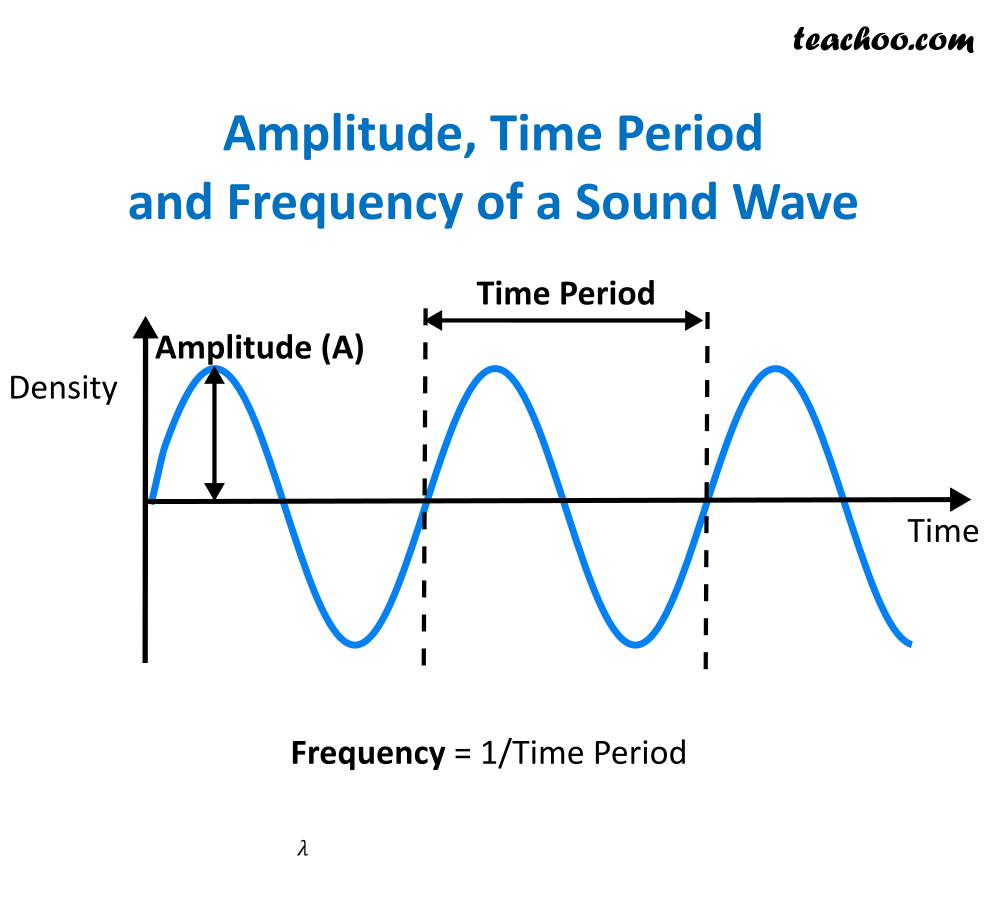
When discussing sound waves, A is sometimes called the displacement amplitude. A is the amplitude, k is the wave number, and is the angular velocity. In this formula, is the position of a particle in the fluid, relative to its equilibrium position, along the x axis at a certain time t. Sound waves traveling in one direction follow the wave formula from the previous section, The ears of humans and animals are able to detect these pressure variations. For a sinusoidal wave in air, the pressure fluctuates around an equilibrium value. This is equivalent to saying that these are regions of higher and lower density. Sound traveling through air consists of regions of compression and rarefaction, meaning regions of higher and lower pressure. Longitudinal waves can be thought of as pressure changes of the medium. Grams per cubic centimeter is also commonly used. The SI unit of density is kilograms per cubic meter. If a uniform material has mass m and volume V, then the density is, Density is represented with the Greek letter ("rho"). ĭensity is the mass per unit volume of a material. This unit is also known as the Pascal, for which the symbol is. The unit of pressure is therefore Newtons per meter squared. The SI unit of force is the Newton (N), and the unit of area is meters squared ( ). When an object is immersed in a fluid, pressure is a perpendicular force exerted on an area of the object's surface, The term fluid can refer to either a liquid or a gas.

The amplitude of sound waves depends on the direction and distance from the source.

Sound waves begin at a source and travel outward in all directions. The human ear can hear sounds with frequencies between 20 and 20,000 Hz. Sound can travel through many different mediums, though humans are most accustomed to hearing sounds through air. For longitudinal waves, the direction of motion of the particles is the same as the direction the wave travels. Sound waves are longitudinal waves that travel through a medium.


 0 kommentar(er)
0 kommentar(er)
